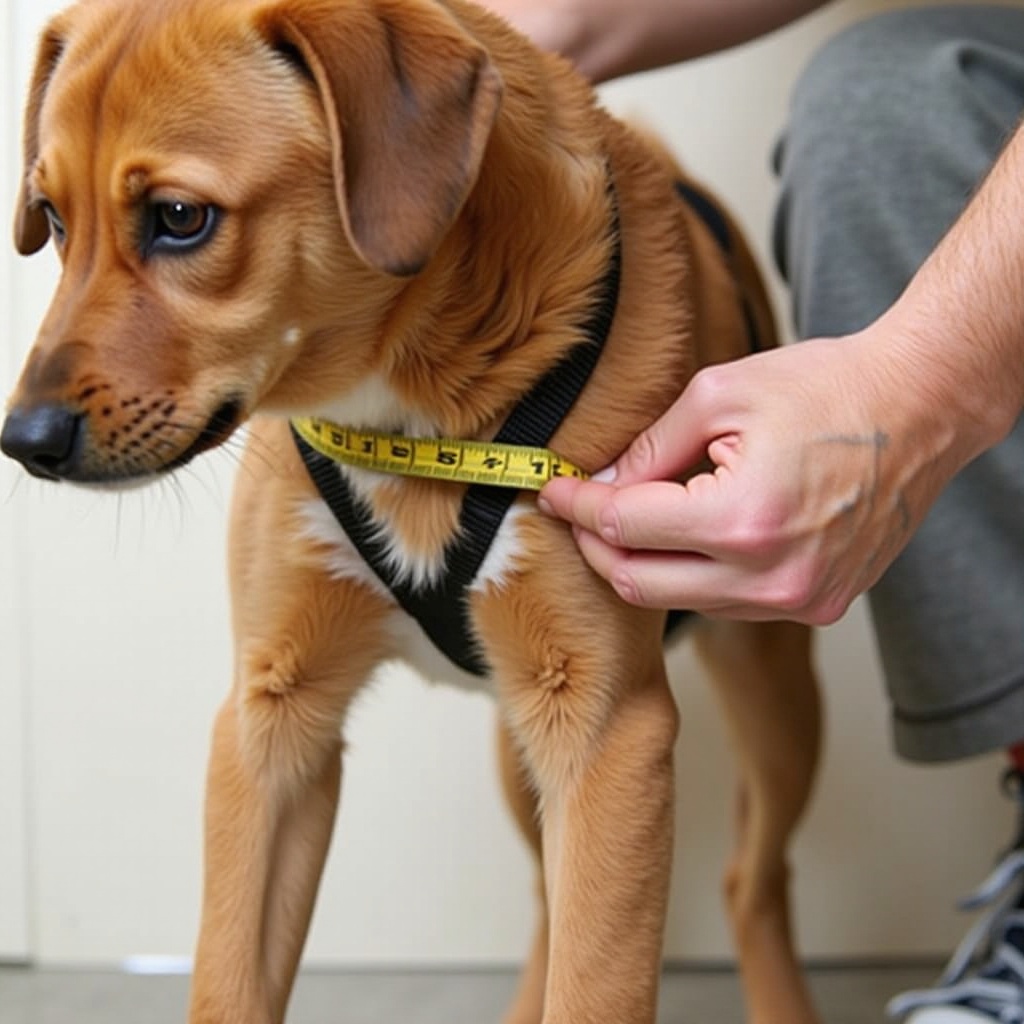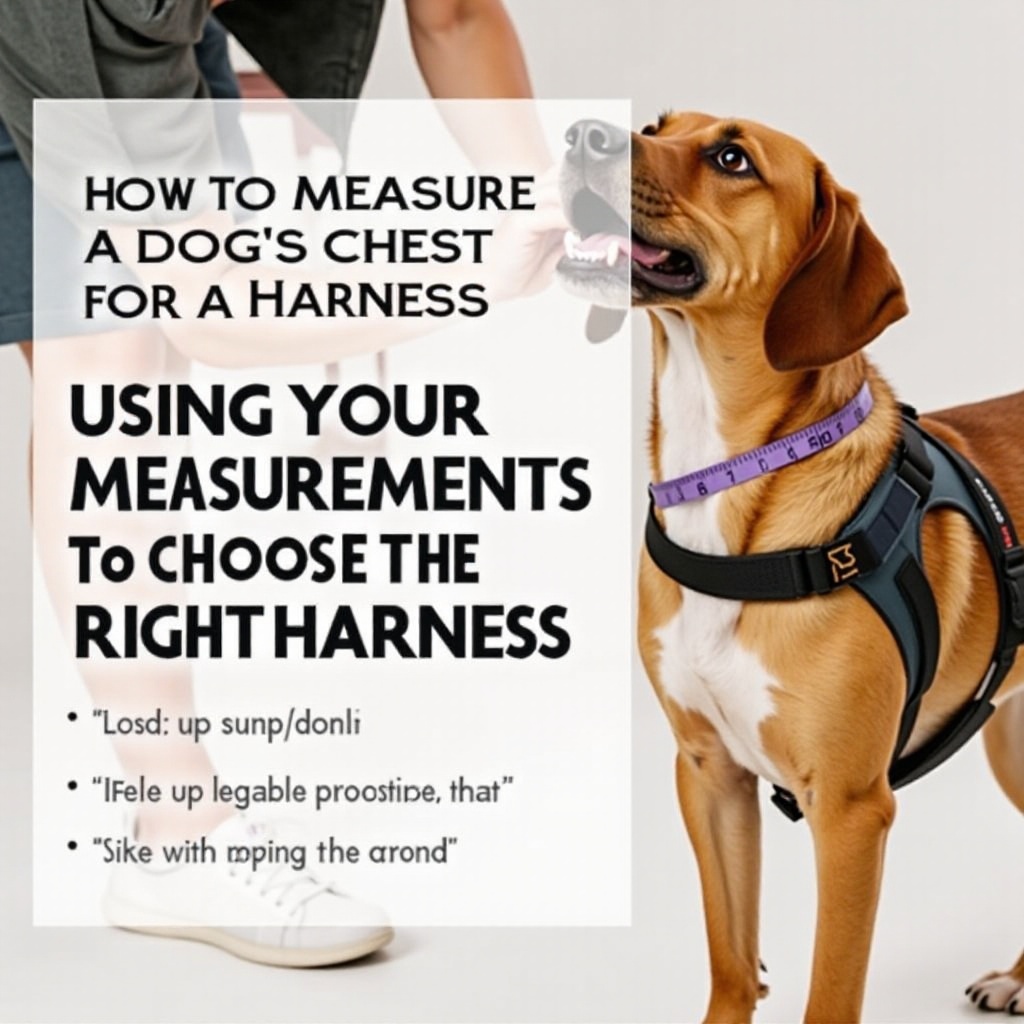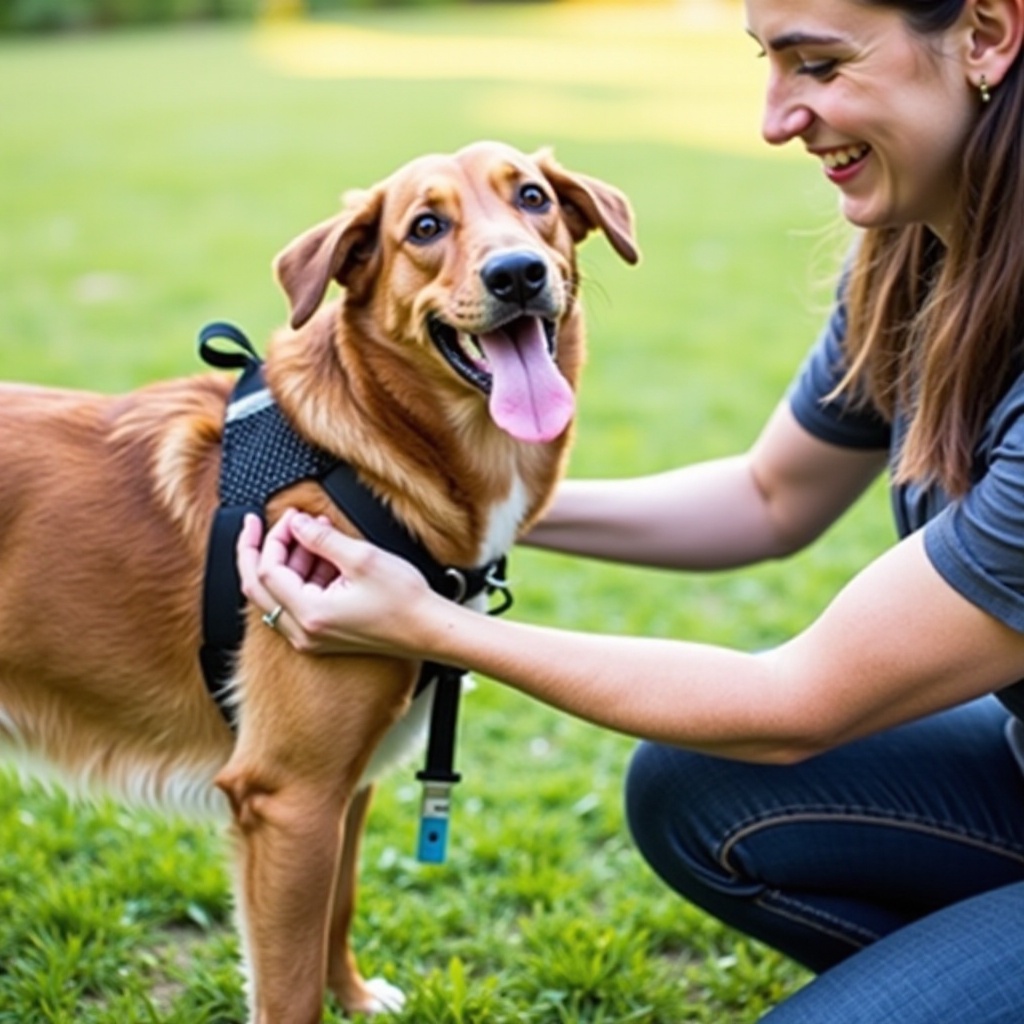Introduction
Measuring your dog’s chest for a harness is an essential task that helps ensure your pet’s comfort and safety. Proper measurements guarantee that the harness fits snugly without causing discomfort or restricting movement. An ill-fitting harness can lead to a variety of problems, such as chafing, escape attempts, or even injury.
Whether you are a new dog owner or looking to replace an old harness, understanding how to take accurate measurements of your dog’s chest is crucial. This guide aims to provide you with a thorough, easy-to-follow process that simplifies the task, ensuring your dog’s new harness fits perfectly.

Why Measuring Your Dog’s Chest is Important
Understanding the importance of accurate chest measurements for your dog cannot be overstated. A harness that fits well can make a significant difference in your dog’s overall well-being and your peace of mind.
-
Comfort and Safety: Dogs come in all shapes and sizes, and finding the right harness for their unique build is vital. A harness that is too tight can cause discomfort and impede your dog’s breathing and movement. On the other hand, a loosely fitting harness can lead to slipping out, increasing the risk of accidents or injuries.
-
Behavioral Benefits: An adequately fitted harness can help with behavior training. When a harness fits well, it can give you better control over your dog, making walks more pleasant and training more effective.
-
Health Considerations: Avoiding injuries like chafing or pressure sores is paramount. Poorly fitting harnesses can cause these issues over time, leading to pain and potential vet visits.
Understanding the importance of a well-fitted harness leads us to the tools needed for this task.
Tools Needed for Accurate Measurement
Before you start measuring your dog’s chest, preparing the necessary tools will streamline the process and ensure accurate results. Here’s what you need:
- Soft Measuring Tape: A soft measuring tape, like the ones tailors use, is ideal. It’s flexible and contours easily to the dog’s body, providing precise measurements.
- Pen and Paper: To note down the measurement.
- Treats: Keeping some treats handy can make the process smoother, especially if your dog tends to be fidgety.
Having these tools ready will help you measure your dog’s chest effortlessly. Now let’s move on to the step-by-step measurement guide.
Step-by-Step Guide to Measuring Your Dog’s Chest
Accurately measuring your dog’s chest involves several steps. Follow this guide meticulously to ensure you get the correct measurement:
- Calm Your Dog: Before you begin, make sure your dog is calm and standing still. Use treats or toys to keep them relaxed and cooperative.
- Locate the Widest Part of the Chest: The chest girth is measured around the widest part of your dog’s chest, usually just behind the front legs and around the back.
- Wrap the Measuring Tape: Take the soft measuring tape and wrap it around the widest part of your dog’s chest. Ensure the tape is straight and not twisted and keep one end securely in place.
- Take Note of the Measurement: Once the tape is in position, take note of the measurement by looking at where the tape meets the starting point. Ensure the tape is snug but not tight— it should sit comfortably.
- Double-Check Your Measurement: To avoid errors, measure the chest at least two more times and take the average if there’s any discrepancy.
These steps provide a reliable way to measure your dog’s chest accurately. As you measure, there are some common pitfalls you’d want to avoid.
Common Mistakes to Avoid
Measuring your dog’s chest may seem straightforward, but common mistakes can lead to inaccurate results. Here are pitfalls to watch out for:
- Using a Rigid Tape: Stiff measuring tapes can result in inaccurate measurements. Always use a soft tape.
- Measuring a Moving Dog: Accurate measurements require a still dog. Make sure your dog is calm or occupied with treats.
- Not Taking Multiple Measurements: One measurement can be off. Always double-check by measuring a few times.
By avoiding these common mistakes, you can ensure a more precise measurement. With the correct measurement in hand, you can now use it to select the right harness.
Using Your Measurements to Choose the Right Harness
Now that you have your dog’s chest measurement, you can start selecting a harness. Different brands may vary in sizing; hence, always compare the chest girth with the harness’s size chart:
- Check Size Chart: Most brands provide a size chart. Match your dog’s chest measurement with the chart to find the correct size.
- Consider Adjustability: Opt for a harness with adjustable straps to fine-tune the fit if your dog is between sizes.
- Evaluate Harness Types: Choose a style that suits your dog’s needs— no-pull, vest, or standard harnesses provide varying levels of support and control.
Choosing the right size ensures that the harness will meet your dog’s needs. With the correct size, ensure the chosen harness fits properly.

Ensuring the Harness Fits Correctly
Once you’ve selected the right size, it’s crucial to ensure that it fits your dog properly:
- Try It On: Place the harness on your dog and adjust the straps.
- Check Tightness: The harness should be snug but not tight. You should be able to slide two fingers between the harness and your dog’s body.
- Observe Your Dog: Let your dog walk around with the harness on. Observe for any signs of discomfort or restricted movement.
These steps help in confirming that the harness is comfortable and safe for your dog.

Conclusion
Properly measuring your dog’s chest for a harness is critical for comfort and safety. By understanding the importance, using the right tools, following a precise measurement process, avoiding common mistakes, and ensuring the fit, you can enhance your dog’s walking experience significantly.
Frequently Asked Questions
What type of measuring tape should I use?
Use a soft measuring tape like those used by tailors. It’s flexible and wraps easily around your dog’s body, ensuring an accurate measurement.
How tight should I measure my dog’s chest?
The tape should be snug but not tight. You should be able to slide two fingers between the tape and your dog’s body comfortably.
How often should I remeasure my dog for a harness?
Re-measure your dog every few months, or if he gains or loses weight, to ensure the harness still fits comfortably.
